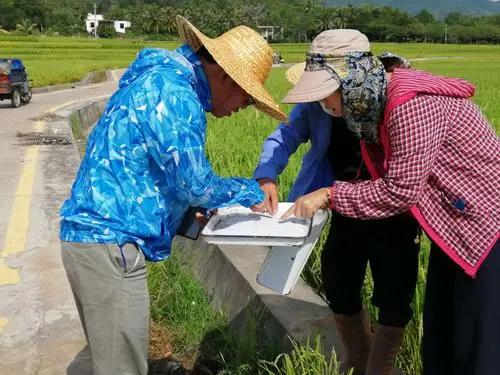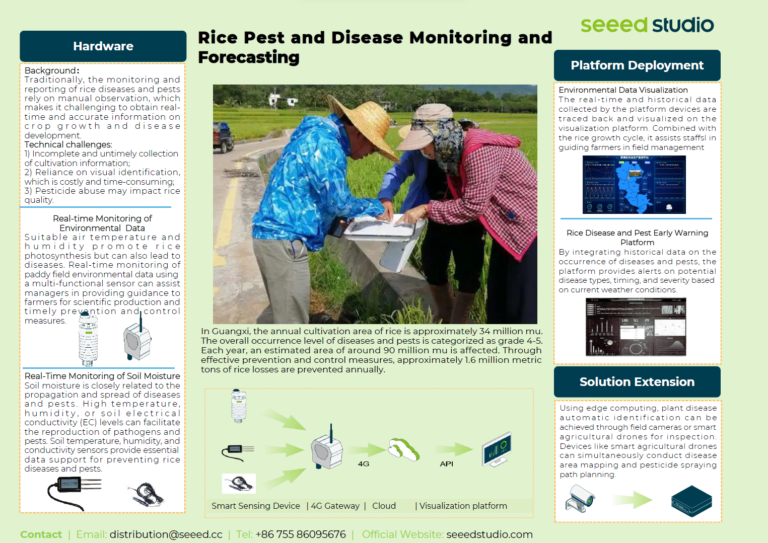Rice Pest and Disease Monitoring Solution to Ensure a Bountiful Harvest
To tackle the problem of rice pests and diseases in the field, Seeed Studio, partnered with Chengdu Yunyi Technology Co., deployed the Rice Pest & Disease Mornitoring and Forecasting solution in Guangxi, China. This project utilized the SenseCAP S700 Weather Sensor, Industrial pH Sensor, DO sensor, SensCAP 4G Sensor Hub, as well as the SenseCAP Portal and Mobile APP. Meteorology is not only necessary for the growth of rice, but also a key factor in the occurrence and spread of pests and diseases. Real-time monitoring can guide farmers in developing field management practices, such as irrigation, fertilization, and use of pesticides, ensuring a bountiful harvest.




